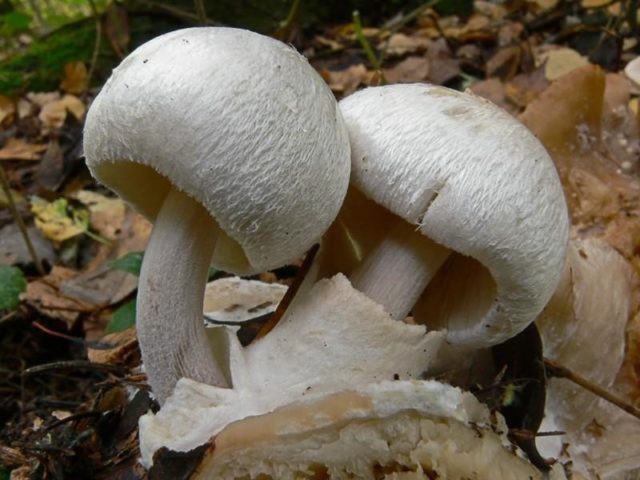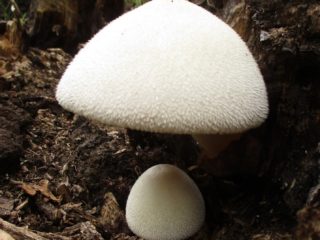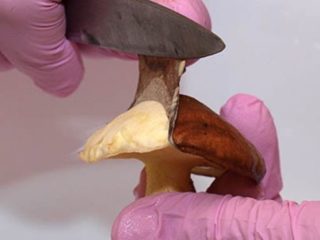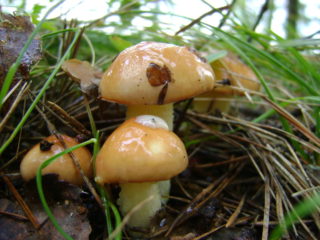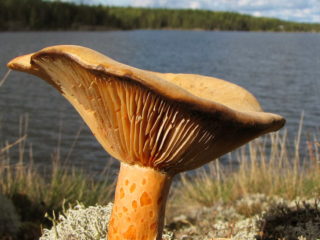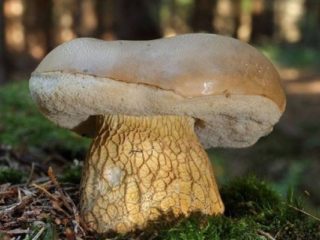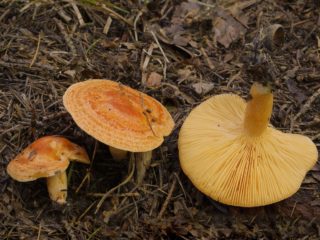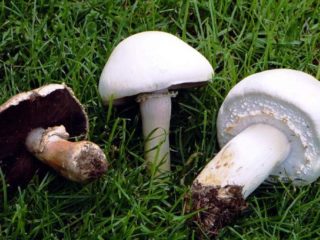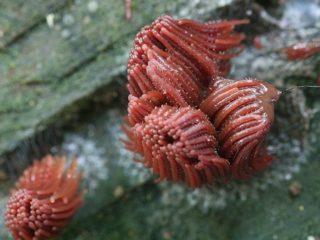Content
Volvariella surrecta, also called ascending or ascending, belongs to the Pluteaceae family. Belongs to the genus Volvariella and reaches large sizes. A characteristic feature of this species is that its spores begin to develop only in the fruiting bodies of other types of mushrooms.
What does Volvariella parasitic look like?
Young specimens have neat spherical caps, almost white, with scaly edges, and dry. As they grow, they straighten, becoming ovoid, and then umbrella-shaped, spread out.The diameter ranges from 2.5 to 8 cm. The edges are smooth, slightly turned inward. With age, the color darkens to a creamy-grayish and silvery-brown color. The apex of an adult fruiting body is almost black, changing to light gray towards the edges. The longitudinal scales of the edge are preserved. The pulp is brittle, juicy, quite meaty. When broken, it acquires a grayish tint.
Strong legs, smooth throughout, slightly tapering at the top. Longitudinal ridges-grooves are covered with delicate velvety fluff. Length from 2 cm in young mushrooms to 10 cm in the largest specimens. Color ranges from gray-white to slightly pinkish.
The ring is missing; at the root there are white or silvery remains of a velvety blanket-volve that turns black as it grows.
The plates are often located, thin, with jagged, flocculent edges. The young mushroom is pure white, then darkens to a pinkish-brown hue. Spore powder is light pink in color.
Where does Volvariella parasitic grow?
Volvariella ascendant grows on the rotting remains of other mushrooms, mainly the species of smoky talkers (Clitocybe nebularis). Occasionally selects other fruiting bodies. It is similar to the conditionally edible Volvariella silky, but, unlike it, it grows in large and small groups, located close to each other.
The mycelium begins to bear fruit as overgrown and rotten fruit carrier bodies appear, from August to November.The owners from the Ryadkov family prefer deciduous and coniferous forests, soils rich in nitrogen and humus, heaps of fallen leaves, plant and wood debris in gardens and vegetable gardens.
This type of fruiting body is quite rare. In Russia it grows only in the Amur region, in the forest tract Mukhinka. Distributed in North America, India, China, Korea, New Zealand. Also found in North Africa and Europe.
Is it possible to eat Volvariella parasitic?
The pulp is white, thin, tender, with a pleasant mushroom aroma and sweetish taste. It is classified as an inedible variety because it has no nutritional value. Non-toxic. Parasitic Volvariella has no poisonous counterparts. Due to its characteristic appearance and habitat, it is easily recognizable and difficult to confuse with other species.
Conclusion
Volvariella parasitic is very beautiful. No toxic substances were found in it, but it is not used in cooking due to its low nutritional value. The mycelium develops in the fruiting bodies of talkers, mainly in moist deciduous and coniferous forests, humus-rich substrates. An endangered species, it grows in protected reserves in Russia. It can be found in other countries of the Northern Hemisphere, the Far East and New Zealand.
